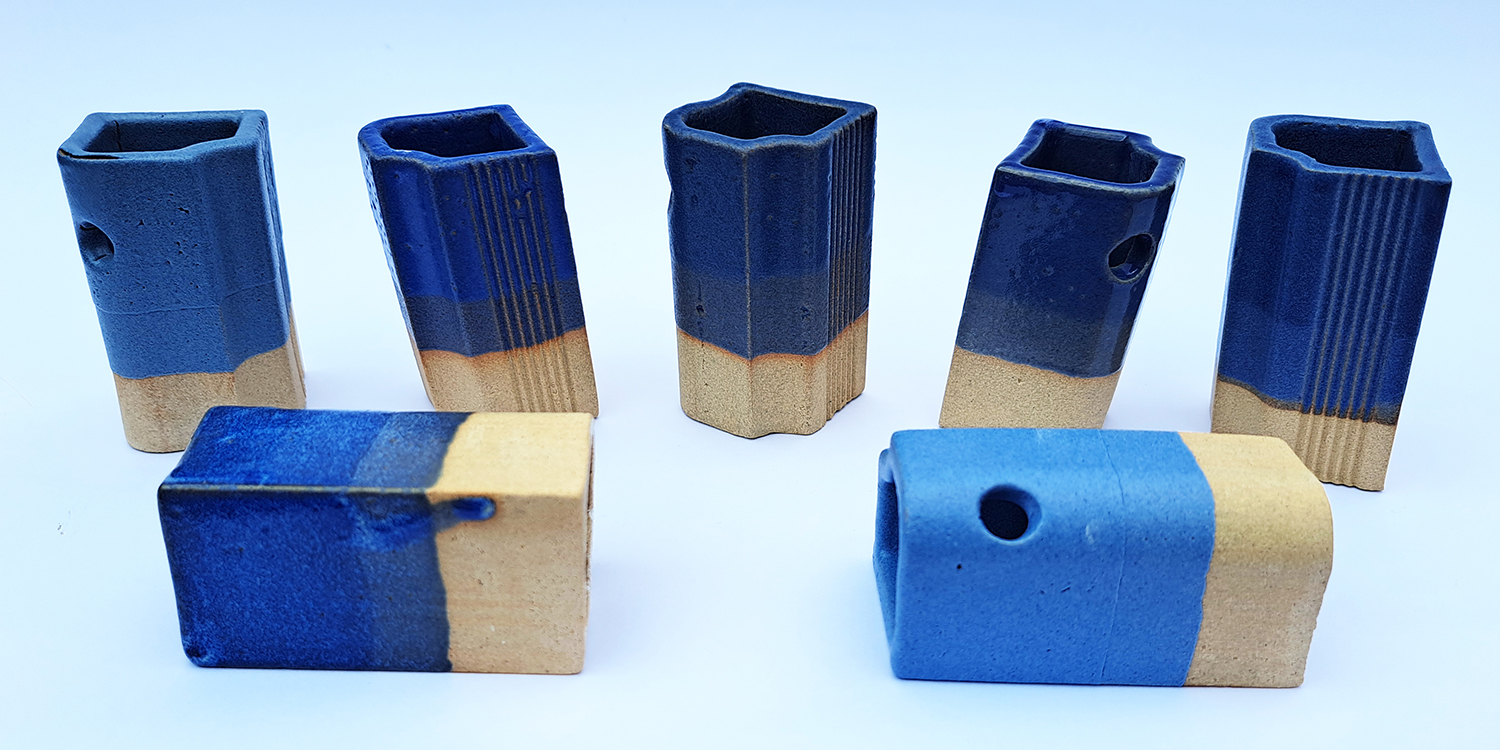Properties & Qualities
Application
Art Architecture Furnishing Furniture Jewellery Lighting Product Sample Making Other
Qualities
Versatile
Colour
Multicoloured
Sample Information
Date of creation
June 2023
Dimensions
35 x 35 x 65 millimetres
Culture & Context
Glaze recipes are widely available through publications and online. Pre-mixed glazes in a diverse range of colours and finishes can be bought ‘’off the shelf’’, however, to a studio ceramicist and contemporary art collectors, the originality of a glaze is a critical part of the work, therefore, it is significantly important for a ceramicist to be able to understand glaze chemistry in order to develop own glazes or alter an acquired collection of recipes suitable for their work.
Process & Production
Through the mixing of chemicals and minerals, organic and inert; a glaze can be developed to suit a particular range of work.
Research and study are needed to distinguish the properties of the wide variety of materials available and being able to calculate and predict with a degree of confidence what a particular mixture result will be and how to change it and fine tune it to suit the maker or client’s needs.
Recipe Details
To make a glaze for ceramics, a balance of 3 basic ingredients needs to be reached, Silica which forms glass, Alumina, which stabilizes the glass, and a Flux to help the materials melt. To this basic formula, colorants, natural and man-made are added to alter or achieve particular hues with the glaze and to define the way in which they reflect or absorb light.
Through study and research, glazes can be developed and fine tuned to suit the work’s needs.
Credits
Craft Maker
Arturo Borrego
Library Contributor
National College of Art & Design Ireland
Photographer
Arturo Borrego













